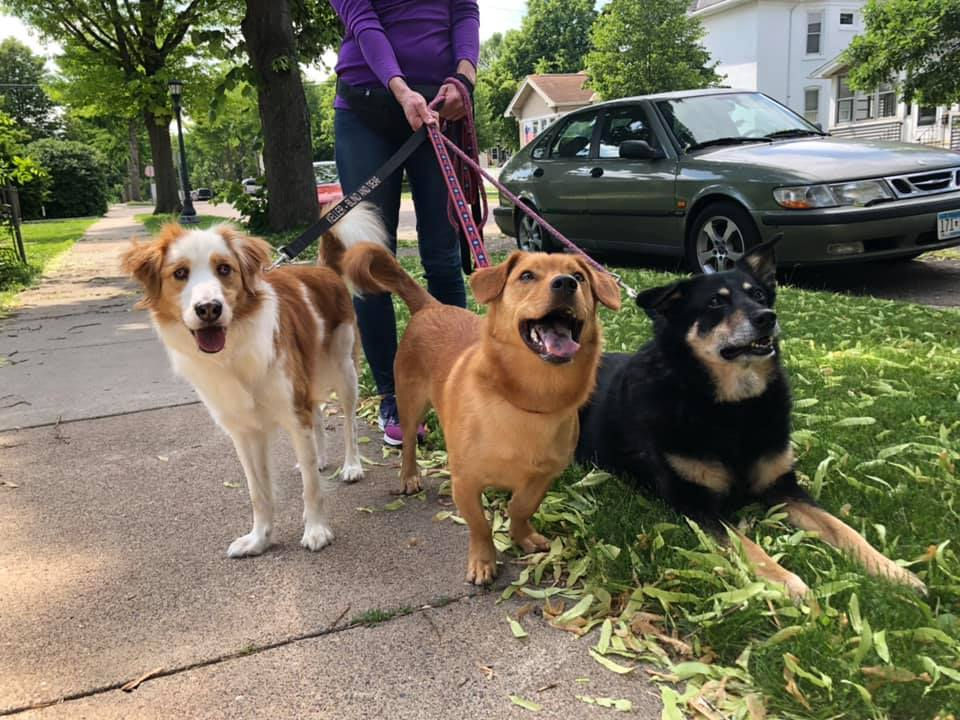How to Choose the Best Dog Walking Routes for Your Pup
- Breanna Pederson

- Oct 31, 2023
- 4 min read
Updated: Mar 6, 2024
When it comes to taking your pup for a walk, there's more to it than just putting on a leash and heading out the door. Selecting the right dog walking route is essential to ensure your furry companion has an enjoyable and safe experience. In this comprehensive guide, we'll walk you through the process of choosing the best dog-walking routes for your pup.
Planning the Perfect Walk
Walking your dog is not just about exercise; it's a chance for them to explore and socialize. Here's how to plan the perfect walk:
1. Consider Your Dog's Needs
Understanding your dog's breed, age, and temperament is key. A young and energetic pup might need longer walks, while older dogs may prefer shorter strolls. Make sure the route suits their needs.
2. Choose a Safe and Dog-Friendly Area
Safety should be a priority. Look for routes with sidewalks, well-maintained parks, and low traffic. Avoid busy streets and areas where dogs are not allowed.
3. Mix It Up
Variety is the spice of life, and it applies to your dog's walks too. Explore different routes to keep your pup engaged and curious.
Dog Walking Route Essentials
Before you head out on a walk, it's crucial to ensure you have the right essentials to keep both you and your pup comfortable and safe:
1. Leash and Collar
Invest in a comfortable leash and collar that won't chafe or irritate your dog's neck. Ensure it's the right size and fits snugly but not too tight.
2. Poop Bags
Being a responsible dog owner means cleaning up after your pup. Always carry poop bags to keep the environment clean.
3. Water and Bowl
Hydration is vital, especially on longer walks. Bring a portable water bowl and fresh water to keep your pup well-hydrated.
4. ID Tag
Accidents can happen. Make sure your dog has an ID tag with your contact information in case they get lost.
Safety Tips for Your Pup
1. Stay Hydrated
Dogs can't sweat like humans, so they're prone to overheating. Make sure to offer water breaks during your walks, especially on hot days.
2. Watch for Signs of Fatigue
Pay attention to your dog's body language. If they seem tired or are lagging behind, it's time to head back home.
3. Keep a Safe Distance from Other Dogs
Not all dogs get along, so keep your pup at a safe distance from other dogs unless you're sure they're friendly.
How to Choose the Best Dog Walking Routes for Your Pup
Now, let's dive into the specifics of choosing the best dog-walking routes. These strategies will help you create memorable experiences for both you and your furry friend.
1. Local Parks and Trails
Explore your local parks and hiking trails. These areas often provide a natural setting where your dog can experience different scents and sights. Be sure to check the rules and regulations for dogs in these areas.
2. Beach Walks
If you're fortunate enough to live near a beach, take your pup for a beach walk. Dogs love the feel of sand under their paws, and the ocean is an excellent source of entertainment for them.
3. Urban Explorations
For city dwellers, urban walks can be just as enjoyable. City streets offer a variety of smells, sounds, and interesting sights for your dog to discover.
4. Wooded Trails
If your dog enjoys a more rugged adventure, wooded trails can be perfect. The natural terrain and wildlife scents will keep them engaged.
5. Dog Parks
Dog parks are fantastic for socialization. Your pup can make new friends and burn off energy in a safe, enclosed environment.
6. Historic Districts
Take a stroll through historic districts to expose your dog to different architectural styles, unique scents, and plenty of photo opportunities.
FAQs
Q: Can I walk my dog in extreme weather conditions?
A: It's best to avoid extreme heat or cold. Short walks or indoor play can be alternatives during severe weather.
Q: How long should a typical dog walk be?
A: The ideal walk duration varies by breed and age. On average, 30 minutes to an hour is suitable.
Q: Should I let my dog off the leash?
A: Only in designated off-leash areas or if you're confident in your dog's recall abilities.
Q: What should I do if my dog is pulling on the leash?
A: Consider leash training and using a no-pull harness to prevent discomfort for both you and your pup.
Q: Can I take my puppy for walks?
A: Yes, but puppies have different exercise needs. Consult your vet for guidance on age-appropriate activities.
Q: How can I make walks more enjoyable for my dog?
A: Keep things exciting by changing routes, bringing treats, and allowing time for exploration.
Conclusion
Choosing the best dog walking routes for your pup is about creating a rewarding experience for both you and your furry friend. By considering their needs and preferences, staying safe, and exploring different routes, you can make your daily walks enjoyable and beneficial. Remember to adapt your walks to your dog's changing needs as they grow and age.





Comments